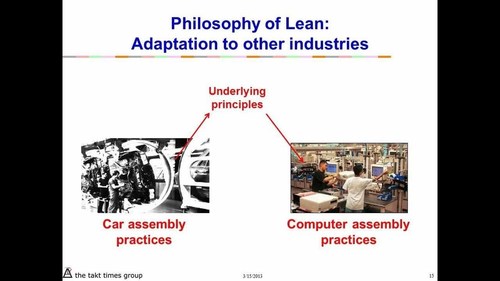Mar 17 2013
One More Time: Lean Is Not Just For High-Volume Producers | Gregg Stocker
See on Scoop.it – lean manufacturing
“One of the most common arguments against the adoption of lean is that it applies only to high volume manufacturing operations. Much of the literature available on the subject, as well as the close association with Toyota has created the misconception that lean is not applicable to organizations that deal with a small number of large projects or highly customized products or services.
There are three basic questions related to the application of lean that demonstrate that it is not dependent on the volume of product or services produced…”
Gregg Stocker’s perspective on the broad applicability of Lean.





Mar 18 2013
Chrysler’s training academy hands-on (With Video) | the Windsor Star
See on Scoop.it – lean manufacturing

More details about Chrysler’s training academy.
See on blogs.windsorstar.com
Share this:
Like this:
By Michel Baudin • Press clippings 0 • Tags: Chrysler, Training, WCM